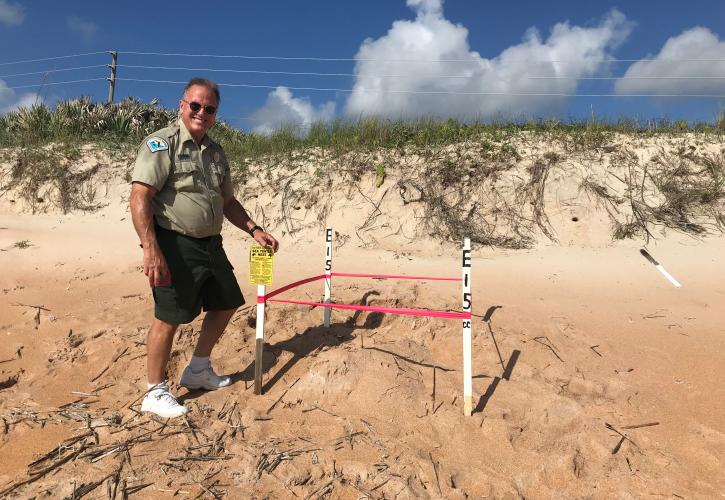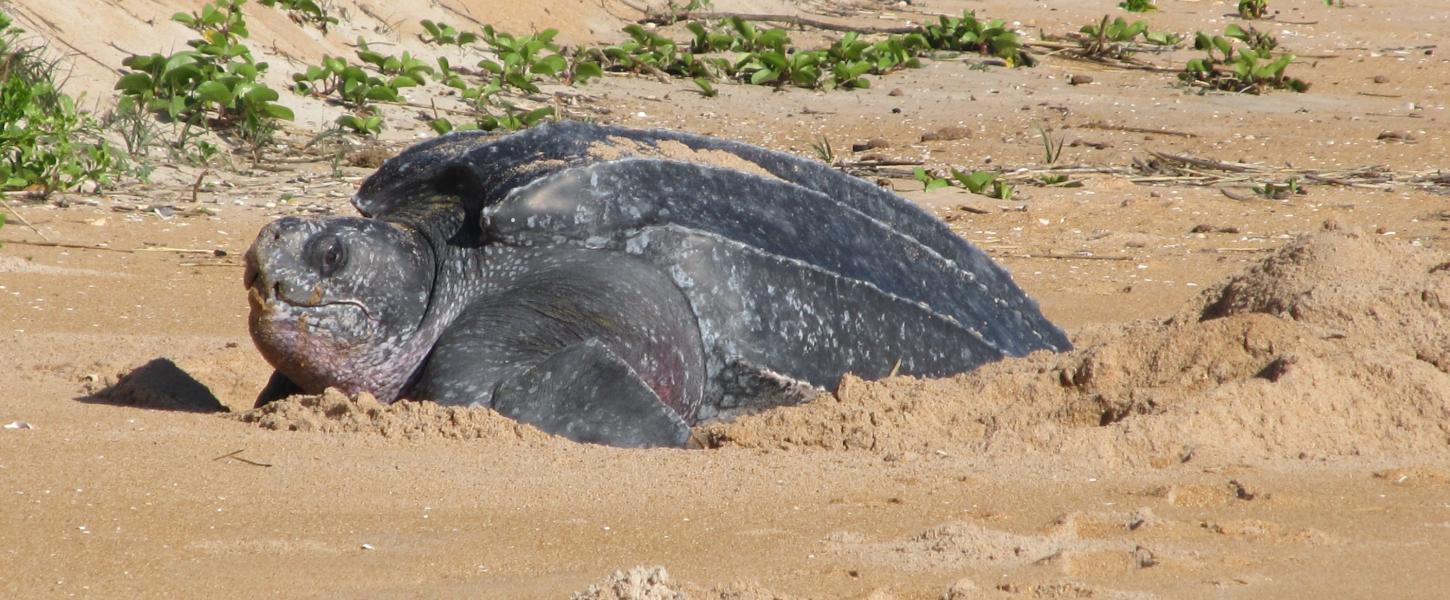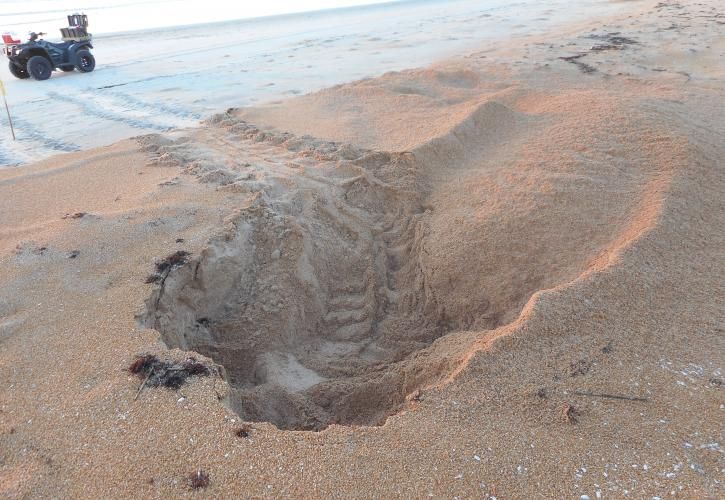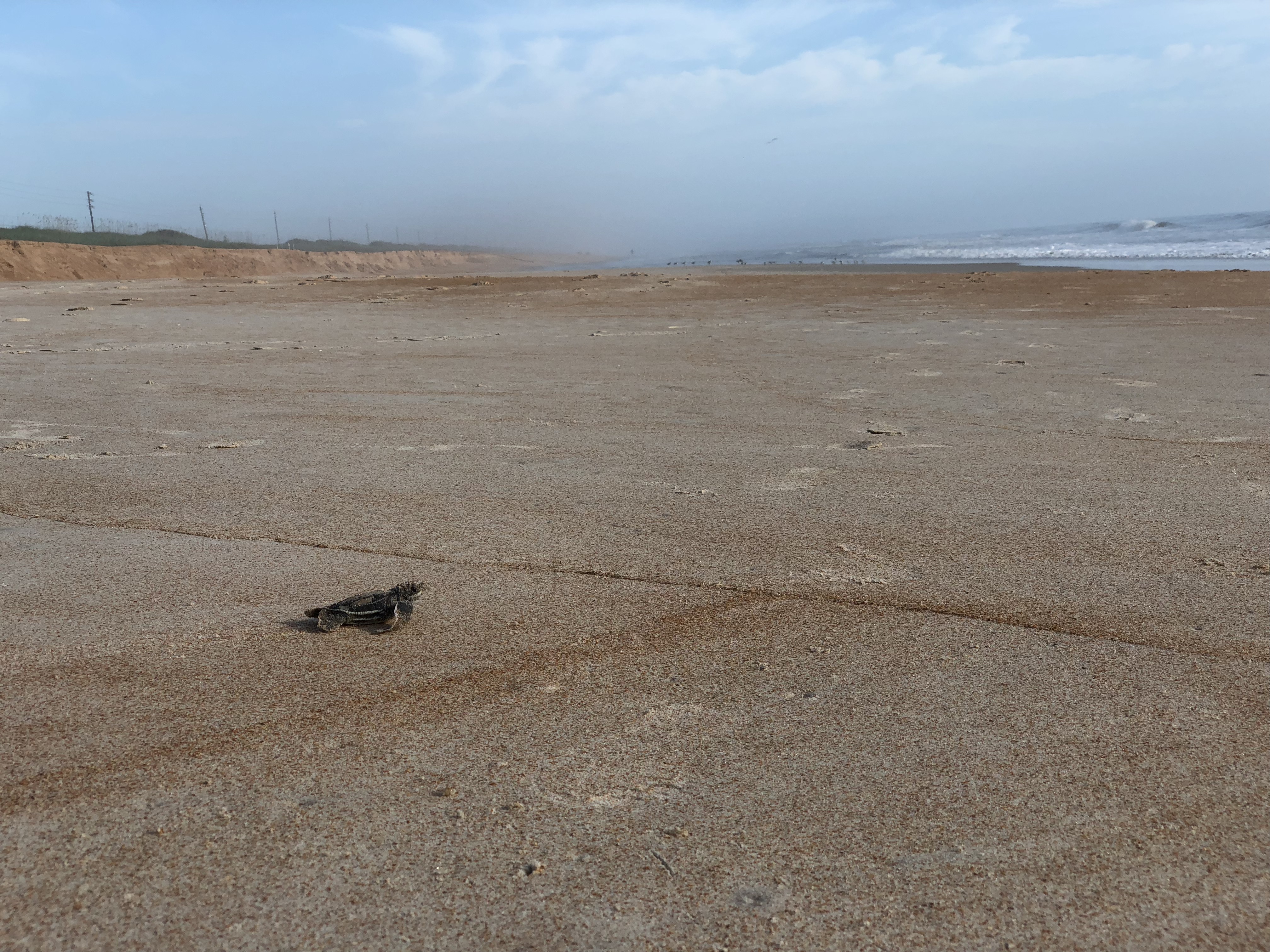
Sea Turtles at North Peninsula

Five species of sea turtles are found swimming in Florida's waters, with three typically nesting on our beach. The loggerhead is the most common with tens of thousands of nests recorded in Florida annually, and it is the most abundant species at North Peninsula State Park.

The green turtles are the only sea turtles that eat plants, and they are named for the greenish color of their body fat. The leatherback is the largest of the sea turtles and is the only species that lacks scales and a hard shell. The other two species are Kemp’s ridley and hawksbill.
Nesting season runs from May through October. North Peninsula State Park is involved in the statewide marine turtle-monitoring program. During the nesting season, park staff and volunteers conduct daily surveys of the beach, recording the previous night’s activities including number of crawls, false crawls, species identification and number of nests.

Crawls are the flipper tracks that indicate a sea turtle arrived and nested on the beach the previous night. False crawl indicates the sea turtle was unsuccessful in nesting.
Most sea turtles lay their nests at night; the exception is the Kemp’s ridley. Sometimes you can catch a glimpse of a sea turtle first thing in the morning, finishing up and crawling back to sea.
We mark each nest with stakes and flagging tape. After the hatchlings emerge and enter the ocean, only the females and sick turtles ever come back to shore. Females tend to return to the same beach that they hatched from to lay their eggs.

The major threats to nesting marine turtles, their nests and turtle hatchlings are predation from natural and introduced predators. At North Peninsula, loss of nests and/or hatchlings has occurred due to erosion from storms and from predation from ghost crabs, fire ants, raccoons, domestic dogs and coyotes.
You can help our nesting sea turtles
- Do not disturb a nesting or hatchling sea turtle - no lights or camera flashes.
- Avoid disturbing marked sea turtle nests.
- Leave the beach as natural as possible.
- Knock down sandcastles and make sure to fill in any holes you dig while visiting the beach so nesting and hatchling turtles don’t become trapped.
- Remove any beach chairs, beach umbrellas, boats or other beach equipment each evening. These can become obstacles for nesting and hatchling sea turtles.
- Don’t litter and take your trash with you when you leave the beach.
- Volunteer at beach cleanup events.
- Don’t release balloons into the air. They travel far and end up in our oceans, where they are consumed by sea turtles that mistake them for food.
- Don’t allow your pets to approach or dig up nests.
